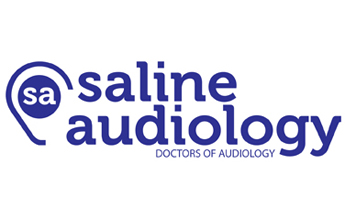Hearing Loss: Say What?
About 26 million Americans have hearing loss caused by exposure to loud sounds
We experience sounds from television, radio and household appliances at levels that don’t damage our hearing every day. But when we’re exposed to “impulse” sounds, such as an explosion or to loud sounds over an extended period of time, such as noise generated in a woodworking shop, sensitive hair cells in our inner ear can be damaged or destroyed.
This can lead to noise-induced hearing loss. About 26 million Americans have NIHL, which could most likely have been prevented.
Sound is measured in decibels. Safe levels of less than 75 decibels – even after long exposure – are unlikely to cause hearing loss. But repeated exposure to sounds at or above 85 decibels can cause damage. The louder the sound, the shorter the amount of time it takes for NIHL to happen.
How loud is too loud?
According to the National Institute on Deafness and Other Communication Disorders, exposure to common shop or woodworking sounds – such as a power drill at 100 decibels – for 15 minutes or longer can damage your hearing.
Regular exposure to concert speakers (110 decibels or more) for more than a minute can permanently damage your hearing. The sound of an ambulance or fire truck siren (120 decibels) and the noise from firing a shotgun (150 decibels) can cause damage. To prevent hearing loss, use ear protection whenever possible.
Common recreational ac-tivities that can put you at risk for NIHL include target shooting, hunting, snowmobile riding, listening to music at high volumes and attending loud concerts. Harmful noises at home include lawnmowers, weed eaters, chainsaws and leaf blowers.
Although being aware of decibel levels is important to protect hearing, how far away from the source people are and how long they are exposed to it are equally important. A good rule of thumb is to avoid noises that are too loud, too close or too long.
To better understand NIHL, it’s important to understand how hearing works.
Hearing depends on a series of events that change sound waves in the air into electrical signals to the brain.
Sound waves enter the outer ear and travel through the ear canal to the eardrum. The eardrum vibrates from the incoming sound waves and sends these vibrations to three tiny bones in the middle ear.
The bones transmit the sound vibrations to fluid vibrations in the cochlea; once the vibrations cause the fluid inside the cochlea to ripple, a traveling wave forms along the basilar membrane. Hair cells ride the wave.
As the hair cells move up and down, chemicals rush into the cells, creating an electrical signal. The auditory nerve carries this electrical signal to the brain, which translates it into a “sound” that we understand.
NIHL happens when there is damage or destruction to the hair cells, which can’t grow back. Once they are destroyed, they are gone for good.
Exposure to impulse or continuous loud noise can sometimes cause temporary hearing loss, which disappears after 16 to 48 hours. Recent research suggests that although the loss of hearing seems to disappear, there may be residual long-term damage.
Loud noise can also cause tinnitus – a ringing, buzzing or roaring in the ears. Tinnitus may subside over time, but it can also be permanent.
Researchers are investigating ways to prevent NIHL even after noise exposure. Noise exposure triggers the formation of destructive molecules, called free radicals, which can cause hair cell death. Nutrients, such as vitamins and minerals, may have the ability to prevent this damage; researchers are trying to determine if there is a window of rapid response in which to rescue hearing from trauma.
Always protect the ears of young children. Hearing plays an essential role in communication, speech and language development. Even a small amount of hearing loss can have negative effects on classroom learning and social development. Children with mild-to-moderate hearing loss do not perform as well in school as children with no hearing loss; this gap in academic achievement widens as they progress through school. Encourage children to cover their ears or move away from loud noises whenever possible.
Do you have hearing loss?
If sounds are distorted, muffled or it is difficult to understand other people when they speak, have your hearing tested by a licensed audiologist or other qualified professional. Hearing damage may occur gradually and many don’t realize they have NIHL until tested.
While NIHL cannot be medically or surgically corrected, it is almost completely preventable. Learn what noises above 85 decibels you are regularly exposed to; wear earplugs or other protective devices when possible. Educate yourself, your children, friends and family of the causes of NIHL.
If you understand the hazards of loud noises and practice good hearing health, you can help protect your hearing for life.
Judy Georgiou is a freelance writer. She can be reached at jlgeorgiou@gmail.com.
Leave a reply